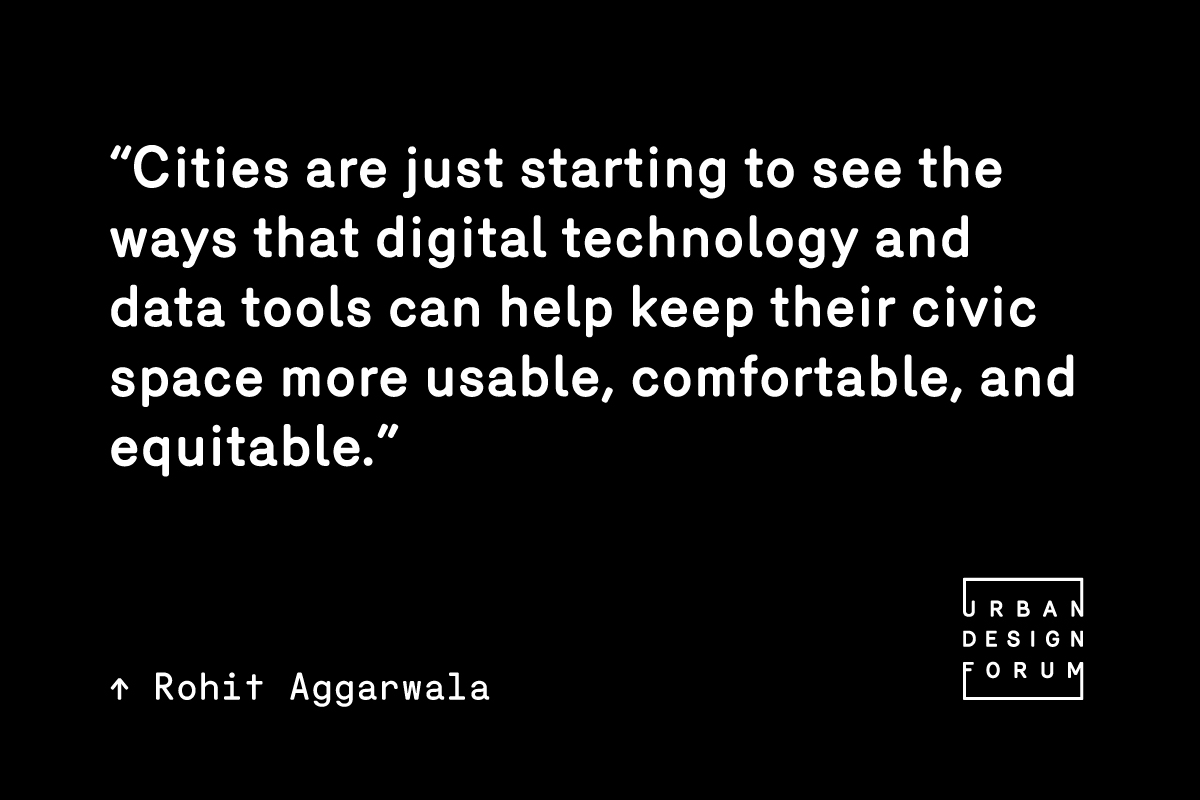
Rohit Aggarwala explores the possibilities data analytics offers for better understanding and improving our public spaces.
“Public spaces make urban life unique. While suburban destinations often try, they can’t recreate the vibrancy, spontaneous interaction, and diversity you find in Millennium Park, Rittenhouse Square, Grand Central Terminal, or on Piccadilly. In part, this comes from the fact that urban dwellers spend far more of their time in shared spaces than people who live in lower-density areas. So there’s no question that making these spaces work well is critical to the long-term success of cities
It’s a problem, then, that we know much less about what goes on in the public realm than we do about most other urban systems. The tools used to study public space haven’t changed much since Holly Whyte’s pioneering use of video footage to understand parks, plazas, and sidewalks — an analysis that led directly to his 1979 plan to save Bryant Park from under-crowding. Many park managers still use basic instruments such as hand counters or infrared sensors to get a sense, however limited, of what’s happening in the spaces they’re charged with maintaining and enhancing. Even the most progressive city departments of transportation, those that promote walking and biking, know far more about vehicle flows than they do about people flows.
This lack of insight also makes it challenging for cities to use limited park funding in the most effective and efficient ways. It’s hard for managers to know about maintenance problems such as overflowing waste bins or broken benches until people complain, or to know what programming or design improvements might draw more people outdoors. The decision to expand a playground or prioritize a running path is made either on the basis of educated guesses by parks managers, or worse, by whoever yells the loudest or has the most political influence.” – Rohit Aggarwala